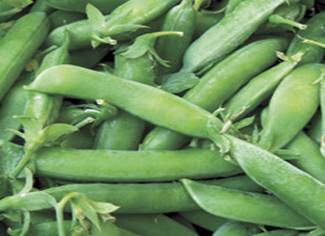

Cascadia is a shorter bush type snap pea renowned for its thick walled pods that average 2-3” long and have sweet wrinkled peas inside them. Pods are crisp and juicy. It is a newer variety and has some resistance to disease. Cascadia vines grow 61-76 cm (24-30") tall and typically do not require staking, although some staking is always beneficial to help support the vines. Cascadia, like many pea types prefer cooler weather but can tolerate some heat. Vines produce heavy yields of slim, dark green pods that contain 6-9 peas of superb quality for fresh eating, freezing, cooking or canning. Pods mature in about 62-76 days after planting.
Growing Instructions:
Direct sow seeds in early spring as soon as the soil can be worked, or in late summer for a fall crop. Choose a location with full sun to partial shade and well-draining soil. Sow seeds 2.5cm (1”) deep and 5-10cm (2-4”) apart in rows spaced 45-60cm (18-24”) apart. Provide support for vining varieties. Keep soil moist and cool to promote germination. Seeds should sprout in 7-14 days. Peas prefer slightly acidic soil with a pH of 6.0-7.5. Fertilize with a balanced fertilizer before planting and once more halfway through the growing season. Harvest peas when pods are plump and the peas inside are tender. Regular harvesting encourages more production.
Soil Conditions: Well-drained soil. Soil pH: 6.0-7.5. Planting Depth: Sow seeds 2.5cm (1”) deep. Germination: 7-14 days. Height at Maturity: 60-180cm (2-6’) tall. Days to Maturity: 55-70 days. Watering: Keep soil evenly moist. Peas require consistent watering throughout the season. Sun/Shade: Full sun to partial shade. Spacing after Thinning: Thin seedlings to 5-10cm (2-4”) apart.